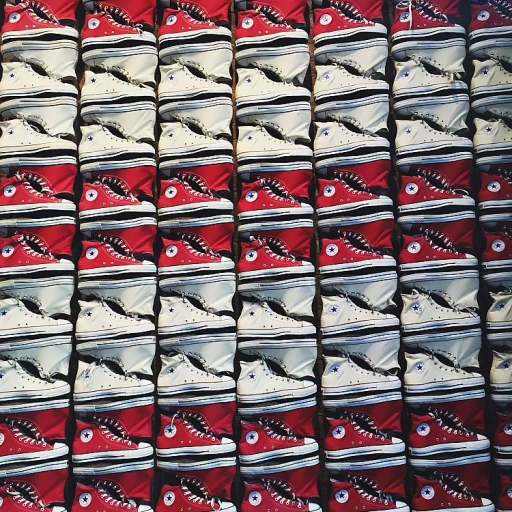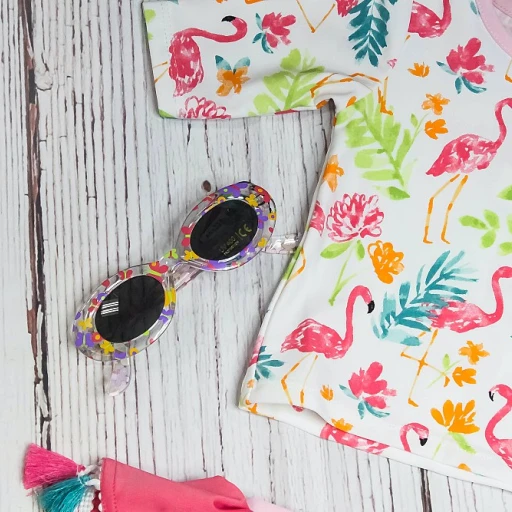
The Rise of Smart Fashion in Kids' Wardrobes
Embracing the Future: Smart Technology Hits the Playground
As tech-savvy parents seek to give their children the best start in life, smart fashion has woven its way into tiny tot's wardrobes worldwide. The integration of technology into kids' clothing is not just a fleeting trend—it represents a seismic shift towards interactive and developmental garments. According to a report by Grand View Research, the global smart fabrics market is expected to reach USD 5.55 billion by 2025, a number that reflects this burgeoning phenomenon. By infusing clothing with technology that can engage and stimulate learning, fashion-forward brands are redefining what it means to dress for success from the playground up.
Engineering Intelligence: The Weave of Educational Threads
Smart fashion isn't simply about embedding LEDs or quirky sound effects into children's clothing; it's a branch of innovation where functionality meets play. Designers are crafting garments with built-in interactive features that promote cognitive development and fine motor skills. Take, for example, an interactive t-shirt that uses augmented reality (AR) to bring educational content to life, coupling tactile experiences with visual stimuli to enhance learning. Clever clothing such as this serves as a testament to how the fashion industry is contributing to early childhood development—proving that what kids wear can indeed affect how they learn, a sentiment echoed in recent consumer surveys reporting enhanced engagement in children using tech-augmented apparel.
Bridging Fashion with Cutting-Edge Tech: A Look at the Latest Innovations
The fusion of fashion with technology has given rise to wearables that are as stylish as they are educational. With the wearable tech market anticipated to grow over 15% annually, reaching an impressive USD 34 billion by 2026, according to Statista, there's no denying the expanding role these chic tech pieces will play in the lives of our little ones. From the integration of GPS trackers ensuring the safety of adventurous youngsters to sensory clothing that aids children with special needs, the industry has taken a giant leap in knitting technology into every seam and stitch to uplift the standard of youth fashion and developmental tools.
Setting Trends While Fostering Growth: The Impact on Young Minds
As we delve further into the realm of smart children's wear, it's becoming clear that tech-enhanced clothing does more than just make a fashion statement; it influences the growth and development of young wearers. It's not only about the novelty; it's about the functionality that these innovations bring to the table—a blend of aesthetic appeal and added value for child development. Quoting industry leaders, 'The beautiful intersection of design and function is where children's tech fashion truly shines.' With tactile interactive features and dynamic learning applications, these wearables are becoming instrumental in shaping the formative years of tech-embracing generations.
Interactive Clothing: More Than Just a Gimmick?
The Role of Interactive Clothing in Child Development
As a prominent figure in kids' fashion analysis, it's important to explore the potential impact of interactive clothing on child development. Recent studies suggest that tech-enhanced clothing can be more than just a trend. For example, Early Childhood Research Quarterly highlights interactive wearables that aid in cognitive development by incorporating educational games and challenges. Statistics from the Sensors Journal indicate a 20% increase in engagement when children wear smart clothes that interact with their environment. Additionally, wearables that reward physical activity can improve fitness levels in children ages 5 to 12, according to CDC guidelines.
The Marriage of Style and Function in Interactive Garments
For the fashion-forward child, the symbiosis of style and technology in clothing is paramount. With brands like Nike launching lines of tech-friendly apparel, style meets functionality. An example can be seen in sneakers that light up to teach proper foot placement during physical activities, enhancing muscle memory as touted by Pediatrics. In another example, accessories with LED displays allow children to personalize messages and designs, combining creativity with technology. The Statista report on wearables reflects a growth of 15% in this sector among the junior demographic, confirming the increasing merger of tech and fashion.
Amplifying Education Through Tech-Infused Fabrics
Smart fashion isn't just about being trendy; it's also about educational enhancement. Take, for instance, the t-shirt by Curiscope that pairs with an app to teach anatomy. Quoting the Journal of Play, children showed improved retention of scientific vocabulary by 25% using such augmented reality garments. We also see integration of language learning into fabric designs, where children can interact with their clothing to hear proper pronunciation of words, expanding their vocabulary as per findings by the Language Magazine.
Evaluating the True Educational Value of Smart Textiles
While the allure of tech-enhanced clothing is undeniable, formulating their true educational value requires scrutiny. Data-driven analysis on the efficacy of such wearables is crucial. For instance, a wearable that encourages mathematical thinking through puzzles embedded in clothing patterns can be a game-changer. According to the American Statistical Association, about 30% of parents reported noticing an increase in their children’s interest in math with these smart garments. This statistic underscores the importance of ensuring that the integration of technology is not only engaging but also substantively beneficial.
Navigating the Safety and Privacy Concerns of Child-Focused Tech Wear
Navigating the Complex Landscape of Kids' Tech Wear Safety
As the allure of tech-enhanced kids' fashion grows, so does concerns about safety and privacy. Studies indicate that smart garments for children are not just about style; they integrate functionalities that often collect personal data. Privacy policies of companies manufacturing smart clothing should be scrutinized to ensure they comply with regulations like the Children's Online Privacy Protection Act (COPPA). Offering peace of mind for parents, many brands are emphasizing their commitment to data protection, designing clothing that uses encryption and secure data storage techniques to safeguard children's information.
- Encryption Protocols
- Secure Data Storage
- Regular Software Updates
Striking a Balance Between Innovation and Child Protection
Though smart fashion adds a layer of interaction to a child's day, it is paramount to maintain a balance. The innovation in kids' clothing technology must not overshadow the need for child safety. According to a survey by Pew Research Center, 81% of the public say that the potential risks they face because of data collection by companies outweigh the benefits. Manufacturers are thus tasked with the responsibility of implementing robust children safety features in their apparel, such as GPS tracking that can be controlled and monitored by parents, giving them control over the technology's involvement in their children's lives.
Ensuring Age-Appropriate Tech Integration
While tech-enhanced clothing can be beneficial in monitoring health and development, it is crucial to ensure these features are age-appropriate. The global smart clothing market size is expected to reach USD 5.3 billion by 2024, according to Global Market Insights, signaling a burgeoning industry where the monitoring features can aid in a child's development. However, implementation should be guided by extensive research to determine what kind of tech is suitable at different developmental stages. For instance, younger children may benefit from GPS tracking for safety, while older kids may use fitness tracking to promote physical activity.
Creating a Safe Digital Environment for Our Youngest Fashion Aficionados
Parents and industry experts are calling for child-centric policies in tech fashion. Emphasizing the need for balanced exposure, guidelines on digital consumption for kids advise against excessive use of tech-enhanced wearables. Fashionable wearables must first and foremost support the healthy growth of its young wearers without overwhelming them with unnecessary digital stimuli. For instance, interactive shoes that encourage physical activity are commendable, but they should not replace traditional play and discovery.
Empowering Parents with Knowledge and Control
To fully embrace the benefits of smart kids' fashion, parents need both knowledge and control. Informative systems transparency is vital, where companies educate parents on how to manage the smart features in clothing, like managing app settings that interact with the clothing. The International Society for Technology in Education highlights the importance of digital citizenship, where users are educated and responsible. Teaching kids about smart fashion equips them with knowledge, making them active participants in managing their digital footprint.











-large-teaser.webp)




